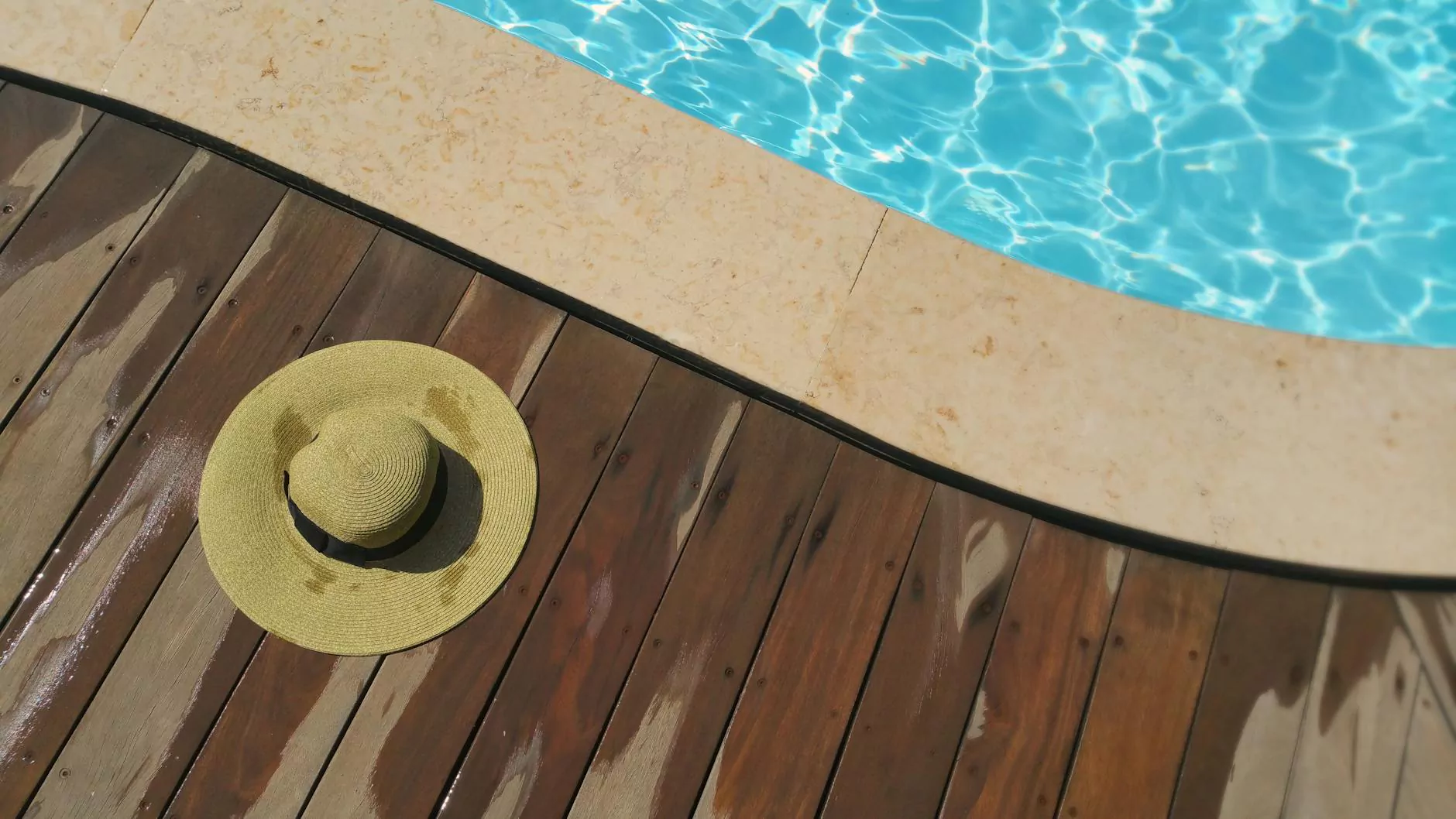The Comprehensive Guide to the Plaster Pool Process: Enhancing Your Swimming Pool’s Longevity and Beauty

Owning a swimming pool is a luxurious addition to any property, offering relaxation, exercise, and entertainment. However, maintaining the beauty and functionality of a pool requires understanding the important processes involved in its construction and renovation. One of the most critical phases in pool maintenance and renovation is the plaster pool process. This detailed guide provides an in-depth look at each step, ensuring you grasp how this process enhances your pool’s durability, aesthetic appeal, and lifespan.
Understanding the Importance of the Plaster Pool Process
The plaster pool process is a fundamental component in the construction and renovation of concrete pools. It forms the inner surface of the pool, impacting not only its appearance but also its structural integrity and resistance to corrosion, algae, and staining. Proper application of plaster ensures a smooth, waterproof, and long-lasting finish that can withstand years of use.
Unlike cheaper alternatives, high-quality plastering extends the life of your pool, reduces maintenance costs, and enhances water quality. Therefore, understanding this process is paramount for homeowners, property managers, and pool professionals who prioritize excellence and longevity.
Step-by-Step Breakdown of the Plaster Pool Process
1. Surface Preparation: Clearing the Canvas
Before any plaster is applied, the pool’s interior surface must be meticulously prepared. This step involves:
- Cleaning the surface: Removing debris, dirt, and residues to ensure a clean base.
- Etching or abrasive blasting: Roughening the surface slightly to improve plaster adhesion.
- Inspection: Checking for any cracks, chips, or imperfections that require repair.
This thorough preparation is critical because any imperfections or contaminants can compromise the integrity of the plaster, leading to cracks, peeling, or staining down the line. Skilled professionals pay close attention in this phase to guarantee a consistent, clean, and ready surface.
2. Repair and Surface Refinement
If the surface has any damages such as cracks or chips, they are repaired using specialized hydraulic cement or patching compounds. This step ensures the surface is fully stable, with a uniform profile that provides optimal adhesion for the plaster. Any rough spots or irregularities are smoothed out to obtain a seamless finish once the plaster is applied.
3. Applying Bonding Agents
Sometimes, especially in renovation scenarios, a bonding agent or primer is used to enhance the adhesion between the existing surface and the new plaster layer. This step is essential for ensuring long-term adhesion and preventing delamination or peeling.
4. Mixing the Plaster: A Precise Science
The quality of the plaster mix is fundamental to the final result. Pool professionals typically use a mixture of calcium aluminate-based plaster, or other high-performance materials, combined with water to achieve the perfect consistency. The plaster should be mixed thoroughly to a smooth, workable paste, free from lumps or air pockets, ensuring an even application.
5. The Splash and Application
Once prepared, the plastering begins immediately. The process involves:
- Application with trowels: Skilled workers spread the plaster evenly across the surface, working meticulously to prevent thin spots or air pockets.
- Layering: For a smooth finish, multiple coats may be applied, with each layer allowed to set properly before applying the next.
- Visual inspection: Constant evaluation ensures uniform coverage and identification of any imperfections for correction.
6. Finishing Touches: Smoothing and Texturing
After the plaster is applied, finishing techniques such as troweling create a smooth, polished surface. Some pools may opt for textured finishes for aesthetic or slip-resistant purposes. Proper curing is essential at this stage to prevent cracks or surface degradation.
Essential Factors for a Perfect Plaster Pool Process
A successful plaster pool renovation or construction hinges on several key factors:
- Material Quality: Premium plaster mixes contain high-performance binders and aggregates, offering superior durability and aesthetic appeal.
- Skilled Application: The process demands experienced professionals with precision tools and techniques to ensure an even, flaw-free finish.
- Environmental Conditions: Ideal temperature and humidity levels during application and curing promote optimal adhesion and surface strength.
- Curing Time: Adequate curing, often lasting 7-14 days, allows the plaster to harden fully and develop maximum strength.
The Role of Professional Pool Contractors in the Plaster Pool Process
While DIY projects might seem tempting, the plaster pool process requires specialization. Professional contractors possess the expertise, equipment, and quality materials to execute each phase with precision. This expertise ensures:
- Consistent quality: Uniform application and curing reduce the chance of surface defects.
- Durability: Proper techniques extend the lifespan of the plaster, withstanding chemical exposure and weather conditions.
- Enhanced aesthetics: Smooth, polished finishes significantly boost the pool’s appearance.
Maintenance Tips for Your Plaster Pool
Proper maintenance maximizes the investment made during the plaster pool process. Here are some vital tips:
- Regular Cleaning: Brush the surface and vacuum the pool weekly to prevent algae buildup.
- Water Chemistry Balance: Maintain proper pH levels (7.2-7.6) and sanitizer concentrations to prevent plaster deterioration.
- Monitor Water Levels: Avoid low water levels that expose the surface to erosion.
- Periodic Inspection: Schedule routine inspections to catch issues early, especially cracks or discoloration.
- Professional Repairs: Address damage promptly with professional repair services to extend your pool’s lifespan.
Cost Considerations and Longevity of the Plaster Pool
The plaster pool process involves investment, but it pays dividends over the lifespan of your pool. Quality plaster can last between 8 to 15 years or more with proper maintenance. Factors influencing cost and durability include:
- Size of the pool: Larger pools require more material and labor.
- Type of plaster: Standard plaster is more affordable, while quartz or pebble finishes, though pricier, offer longer durability.
- Surface preparation and complexity: Intricate designs or extensive repairs may add cost but improve longevity.
Conclusion: Investing in Professionalism for Optimal Results
Understanding the plaster pool process is vital for anyone passionate about maintaining a beautiful, durable, and long-lasting swimming pool. From meticulous surface preparation to expert application and proper curing, each step plays a significant role in the final outcome. Poolrenovation.com specializes in premium swimming pool services, including expert plastering, water heater installation, and repair solutions designed to meet the highest standards.
For homeowners seeking to renovate or build a new pool, entrusting the project to experienced professionals guarantees an impeccable finish, unmatched durability, and enhanced aesthetic appeal. The investment in quality plastering and expert craftsmanship ensures your swimming pool remains a centerpiece of your property for many years to come.
Contact Us Today for Expert Pool Renovation and Maintenance Services
Ready to upgrade or maintain your swimming pool? Reach out to poolrenovation.com for comprehensive services that prioritize quality and longevity. Our team of experts is dedicated to providing unmatched craftsmanship and customer satisfaction. Your perfect pool awaits with the right attention to detail in the plaster pool process.









